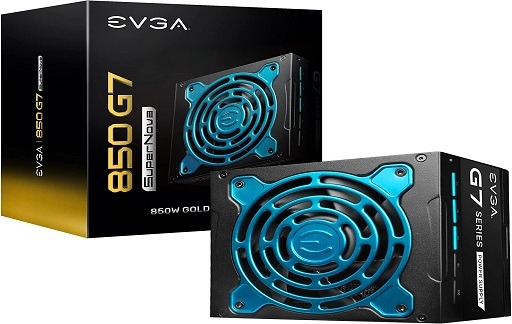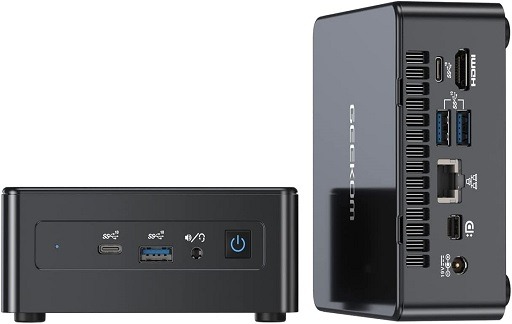AMD Radeon RX 7900 XTX power supply: Changing your graphics card may need upgrading your power supply as well, particularly if it is one of the most recent generations of flagship cards, such as the AMD Radeon RX 7900 XTX.
If you want to make sure everything runs smoothly and reliably, see if your present power supply can withstand the enhancements provided by AMD’s latest RDNA 3 or Radeon RX 7000 GPUs.
So far, the new GPU lineup consists of only two cards: the RX 7900 XTX and the 7900 XT. The RX 7900 XTX is the one that consumes the most power of the two. Even yet, it’s still somewhat conservative in comparison to Nvidia’s flagship, the RTX 4090.
The Founders Edition from Nvidia has a total board power (TBP) of 450 watts and requires an 850-watt power supply. However, some of Nvidia’s board partners that created unique versions of the GPU require a substantially larger power supply, ranging up to 1,200 watts.
In the case of AMD’s RX 7900 XTX, things won’t be quite that bad. AMD places a high emphasis on performance-per-watt, which means that RDNA 3 delivers a lot of punch while utilizing a tiny amount of power. Even so, a reliable power supply is required to keep everything running properly.
If you’re going to use one of AMD’s best graphics cards, you’re going to need a decent CPU to go with it, and those things add expense. Below, we’ll go through some of the greatest power supply options for the new AMD flagship GPU, so jump right in and choose yours.

What type of power supply is required for the AMD Radeon RX 7900 XTX?
While AMD’s Radeon RX 7900 XTX is a strong GPU in its own right, it is not very power-hungry. The card’s TBP has been set at 355 watts, which is roughly 100 watts less than Nvidia’s RTX 4090.
This is not surprising given that AMD’s flagship is not on par with Nvidia’s RTX 4090. Instead, it will compete with the Nvidia 4080, which consumes less power with its 320W TBP.
In other news, the power requirements for AMD’s second-best GPU have recently changed. As a result, the TBP of the RX 7900 XT has been increased to 315W.
| RX 7900 XTX | RX 7900 XT | |
| Compute units | 96 | 84 |
| AI accelerators | 192 | 168 |
| Ray tracing accelerators | 96 | 84 |
| Memory | 24GB GDDR6 | 20GB GDDR6 |
| Memory speed | 20Gbps | 20Gbps |
| Memory bus size | 384-bit | 320-bit |
| Game clock speed | 2.3GHz | 2GHz |
| Connection support | DisplayPort 2.1 | DisplayPort 2.1 |
| Total board power | 355 watts | 315W |
| List price | $1,000 | $900 |
Even though AMD has not yet issued an official recommendation for the power supply unit (PSU) that should be used with the RX 7900 XTX, there are some safe bets that you can pick up right now instead of waiting for AMD’s word on the matter.
Instead of waiting for AMD’s recommendation, you should get these. It is crucial to note that AMD’s board partner Asus advises anywhere between 850W and 1200W, and our suggestions lie within that range. Before we get to them, it is vital to note that our recommendations fit within that range.
A power supply unit with 750 watts of capacity is going to be the bare minimum requirement for the RX 7900 XTX. Choosing 850W as your output gives you a little bit more room to maneuver and is probably the safer choice.
Keep in mind that AMD’s partners may ask for even more than that, so if you’re putting together a beast of a build, it’s probably a good idea to go with a power supply unit that’s somewhere between 900W and 1,000W.
Now, let’s begin at the very top of the list. The Corsair RM750x is a good option to consider when looking for a great power supply unit with 750 watts for a build that is more cost-conscious.
This is a power supply with 750 watts of gold rating. You are making a good choice here because Corsair is well-known for the quality of the cooling and power solutions it offers, and the price, which was approximately $120 at the time this article was written, is very reasonable.
EVGA may no longer produce graphics processing units (GPUs), but the company is still in business and produces high-quality power supplies in addition to other components. The EVGA Supernova 850 G7 is a great example of the high-quality components that are available today.
This 850W Gold Plus power supply unit is efficient, has the ability to run the RX 7900 XTX as well as a strong processor, and is quite inexpensive, costing only about $70 more than the 750W Corsair model.
In the event that you are not an EVGA fan, some other good choices for an 850W power supply include the Be Quiet! Straight Power 11 Platinum 850W or the more frugal Cooler Master MWE Gold 850 V2 are both excellent choices.
You can get a really powerful PSU that has a lot of headroom and helps you future-proof your rig if you assume that you are the type of person who prefers to err on the side of caution whenever possible.
It is not at all required for the RX 7900 XTX base model, however certain of AMD’s partners may advise that you use a power supply unit (PSU) with a wattage that is comparable. In any event, it is quite likely to be unnecessary, but it could be useful for the construction of high-end personal computers.
If you have a budget of about $320, the Seasonic Prime TX-1000 is an excellent 80+ Titanium alternative that you should consider purchasing. It operates without making a sound, it is dependable, and it is prepared to supply power to gaming systems designed for enthusiasts. It also comes at a high cost.
The RM1000x from Corsair and the ROG Strix 1000W Gold from Asus are two power supply units (PSU) that are both affordable and reliable.
We’ve graduated to the big leagues with a pair of power supply units that each have 1,200 watts. Similar to the alternatives for 1,000W, they will be excessively powerful for the majority of systems that are centered around the RX 7900 XTX.
In spite of this, some of AMD’s partners do require that level of wattage, so if you really want to future-proof your build for the next few years, you could go all out and buy a power supply unit that has 1200W of capacity.
The Asus ROG Thor 1200W is one of the greatest power supply units available in this price range, provided that its price tag of $400 does not deter you from considering it.
When your computer really needs all that additional power, you can rely on this power supply, which has an 80+ Platinum certification, is quiet, and is reliable.
With this power supply unit, you won’t have any trouble purchasing one of the most powerful central processing units (CPUs) on the market (even the more energy-intensive Intel models), installing as much RGB lighting as your heart desires, and still having plenty of power to spare.
The EVGA Supernova 1200 P2 and the Corsair HX1200 are two additional possibilities in which you are able to put your complete faith.
AMD prevented a possible disaster
Two of the industry-standard 8-pin connectors are being utilized by AMD in the production of its most recent graphics card. There is a possibility that some of the models, particularly those produced by board partners of AMD, will use three ports.
In any case, this is good news for the person who is building the computer because it means they won’t have to experiment with new technology in order to accomplish something as important as maintaining a steady flow of electricity.
Both the RTX 4080 and the RTX 4090 rely on a 16-pin connector for their power delivery. The RTX 4090 is the most recent flagship product from Nvidia. Nvidia decided to bundle its graphics processing units (GPUs) with a 12VHPWR adapter because most power supply units do not come with one of those.
This adapter is designed to deliver up to 600 watts of power through the use of just a single cable. Unfortunately, it did not take into account the fact that bending the cable could potentially result in major thermal problems.
As a direct consequence of this issue, some users have reported something that can only be described as a truly terrifying occurrence: the power adapters and connectors on their devices have caught fire and completely melted. It would appear that AMD may have been smart to steer clear of the 12HVPWR adapter, which is still being looked into by Nvidia, as this may have been the best decision.
Safer to be safe than sorry
It is always better to give some wiggle area when selecting a power supply since this allows for more flexibility. You have no way of knowing what kinds of advancements will become available to you in the years to come. You could also end up overclocking either your graphics processing unit (GPU), your central processing unit (CPU), or even both, which will put additional strain on your power supply unit.
It is tempting to disregard the power supply unit as an afterthought and look for something affordable, but believe us when we say that this is not a good idea.
You are not going to get very good use out of your computer if the electrical supply is unstable. It is preferable to spend a little bit more money upfront on a Gold or Platinum power supply unit than to later regret not getting one when something goes wrong.
On the other hand, there is no reason to go for something that would be an excessive amount of effort. The most prudent thing for you to do is to tally up the potential power consumption of all of your components, and then add a little bit of headroom onto that total.
There is power supply unit (PSU) calculators available online that can assist you with doing that, such as the one that was developed by Newegg.
If you plan on using an AMD Radeon RX 7900 XTX in your next build, any of the power supplies that were discussed above will do a good job of powering the graphics card.
However, if you are interested in looking at some other options, be sure to take a look at our selection of the best power supplies that are currently available on the market.
CamRojud may earn a certain commission on products purchased via our links, which supports our effort on this content.
Would you like to read more about AMD Radeon RX 7900 XTX power supply-related articles? If so, we invite you to take a look at our other tech topics before you leave!












